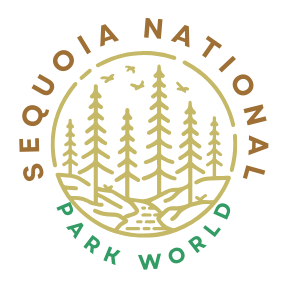Sequoia National Park was established on September 25, 1890, by an act of Congress signed by President Benjamin Harrison. This historic decision marked the creation of the first national park dedicated to protecting a living organism – the giant sequoia trees. The park’s establishment was a pivotal moment in conservation history, setting a precedent for future environmental protection efforts in the United States.
When Did the Idea of Sequoia National Park First Emerge?

The concept of Sequoia National Park began to take shape in the late 19th century. Concerns about the rapid logging of giant sequoia trees in California’s Sierra Nevada mountains prompted conservationists and nature enthusiasts to advocate for their protection. The movement gained momentum as awareness grew about the unique and irreplaceable nature of these ancient giants.
What Were the Key Events Leading to the Park’s Creation?

- 1880s: Increased logging activities in the Sierra Nevada region
- 1886: Naturalist John Muir begins campaigning for the protection of sequoia groves
- 1890 (Early): Bills introduced in Congress to establish the park
- September 25, 1890: President Benjamin Harrison signs the legislation creating Sequoia National Park
How Did the Park Evolve in Its Early Years?
The early years of Sequoia National Park were marked by significant developments:
- 1891-1913: U.S. Army Cavalry troops assigned to protect the park
- 1903: Completion of the first road to Giant Forest
- 1914: Appointment of Walter Fry as the first civilian administrator
- 1916: Transfer of park administration to the newly established National Park Service
What Major Milestones Shaped the Park’s History?
| Year | Milestone |
|---|---|
| 1890 | Establishment of Sequoia National Park |
| 1926 | Construction of Generals Highway |
| 1940 | Incorporation of General Grant National Park into Kings Canyon National Park |
| 1943 | Joint administration of Sequoia and Kings Canyon National Parks |
| 1976 | Designation as UNESCO International Biosphere Reserve |
How Has the Park’s Mission Evolved Since Its Creation?
While the primary mission of protecting giant sequoias remains unchanged, the park’s focus has expanded to include:
- Ecosystem conservation
- Scientific research
- Public education and recreation
- Climate change mitigation
- Cultural resource preservation
What Challenges Has the Park Faced Over the Years?
Sequoia National Park has encountered various challenges throughout its history:
- Balancing conservation with public access
- Managing wildfires and their impact on sequoia groves
- Addressing climate change effects on the park’s ecosystem
- Dealing with overcrowding and resource strain during peak seasons
- Protecting wildlife and maintaining biodiversity
How Has the Park’s Infrastructure Developed Since 1890?
The park’s infrastructure has seen significant improvements:
- 1903: First road to Giant Forest completed
- 1917: Construction of steps to Moro Rock summit
- 1926: Generals Highway built, improving accessibility
- 1930s: Civilian Conservation Corps enhances facilities
- Present Day: Modern visitor centers, campgrounds, and trail systems
What Role Does Sequoia National Park Play in Conservation Today?
Sequoia National Park continues to be at the forefront of conservation efforts:
- Protecting ancient sequoia groves
- Conducting research on forest ecology
- Implementing fire management strategies
- Educating visitors about environmental stewardship
- Collaborating with other parks and agencies on regional conservation initiatives
How Does the Park Commemorate Its Founding?
While there’s no annual celebration specifically for the park’s establishment, Sequoia National Park honors its history through:
- Educational programs highlighting its founding and significance
- Ranger-led tours focusing on the park’s history and conservation efforts
- Special events marking significant anniversaries
- Ongoing preservation of historic structures and cultural sites within the park
What Can Visitors Experience Today That Connects Them to the Park’s Origins?
Visitors can connect with the park’s history through various experiences:
- Walking among ancient sequoia groves, including trees that were alive when the park was established
- Exploring historic structures like the Giant Forest Museum
- Hiking trails that have been in use since the park’s early days
- Participating in ranger-led programs about the park’s founding and evolution
How Has the Park’s Global Recognition Changed Since Its Establishment?
Sequoia National Park’s global status has grown significantly:
- 1976: Designated as a UNESCO International Biosphere Reserve
- 1984 and 2009: Large portions designated as wilderness areas
- Recognized worldwide as a model for conservation and park management
- Attracts international visitors and researchers
The establishment of Sequoia National Park on September 25, 1890, was a landmark decision in American conservation history. From its humble beginnings as a refuge for giant sequoias to its current status as a world-renowned national park, Sequoia has played a crucial role in shaping environmental protection policies and public appreciation for natural wonders. As we reflect on when Sequoia National Park was made, we’re reminded of the foresight of early conservationists and the ongoing importance of preserving our natural heritage for future generations.
References:
1. Fox News: On this day in history, September 25, 1890, Congress establishes Sequoia National Park in California
2. National Park Service: History & Culture – Sequoia & Kings Canyon National Parks
3. National Park Service: Quick Fact Sheet – Sequoia & Kings Canyon National Parks

